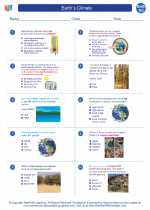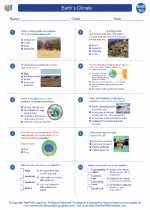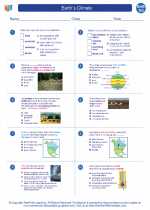Runoff
Runoff is the movement of water over the land surface. It occurs when the soil is saturated and cannot absorb any more water, or when the intensity of rainfall exceeds the infiltration capacity of the soil. Runoff can be influenced by factors such as the slope of the land, soil type, vegetation cover, and human activities.
Causes of Runoff
1. Rainfall intensity: High-intensity rainfall can lead to increased runoff as the soil cannot absorb the water fast enough.
2. Soil type: Soils with low permeability, such as clay soils, are more prone to generating runoff compared to sandy soils.
3. Slope of the land: Steep slopes can lead to rapid runoff, while flat surfaces allow for more infiltration and less runoff.
4. Vegetation cover: Dense vegetation can intercept and slow down the movement of water, reducing runoff. Deforestation or urbanization can increase surface runoff.
5. Human activities: Construction, pavement, and other human interventions can alter the natural landscape, leading to increased runoff.
Effects of Runoff
1. Erosion: Runoff can cause soil erosion, leading to loss of fertile topsoil and sedimentation in water bodies.
2. Pollution: Runoff can carry pollutants such as pesticides, fertilizers, and sediment into rivers and lakes, affecting water quality and aquatic ecosystems.
3. Flooding: Excessive runoff can result in flash floods, causing damage to property and posing risks to human safety.
4. Groundwater recharge: Runoff contributes to the replenishment of groundwater, which is important for maintaining water supplies.
Study Guide
Here are some key points to remember about runoff:
- Define runoff and explain the factors that influence its occurrence.
- Describe the causes of runoff and how human activities can exacerbate it.
- Discuss the effects of runoff on soil, water quality, and flooding.
- Explain the importance of runoff in groundwater recharge.
- Provide examples of how runoff can be managed or mitigated to reduce its negative impacts.
Understanding runoff is crucial for managing water resources and mitigating the impacts of urbanization and land use changes. It also plays a significant role in the Earth's hydrological cycle.
[Runoff] Related Worksheets and Study Guides:
.◂Earth Science Worksheets and Study Guides High School. Earth`s Climate

 Worksheet/Answer key
Worksheet/Answer key
 Worksheet/Answer key
Worksheet/Answer key
 Vocabulary/Answer key
Vocabulary/Answer key
 Vocabulary/Answer key
Vocabulary/Answer key
 Vocabulary/Answer key
Vocabulary/Answer key
